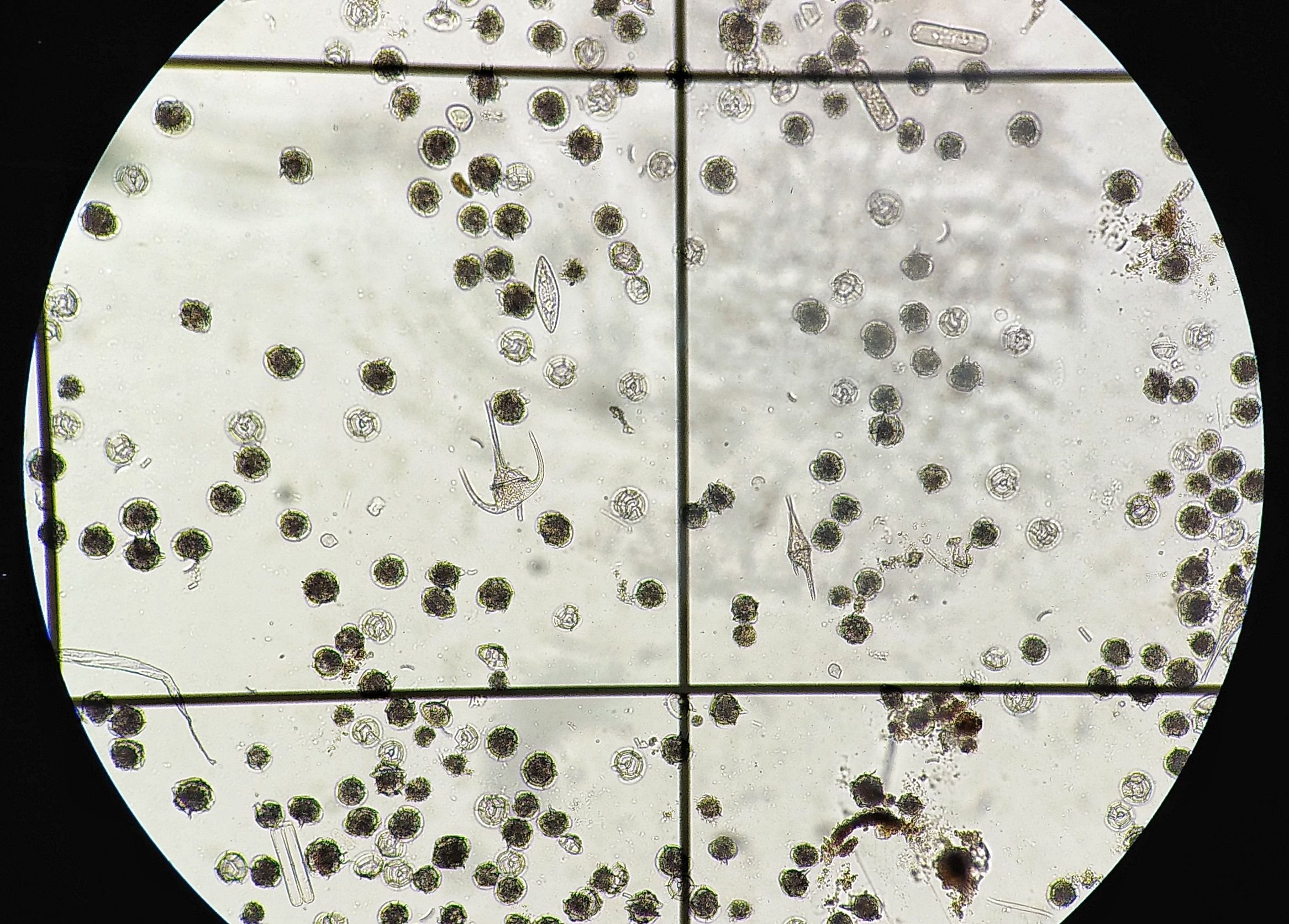I met one of my friends who work in agency monitoring harmful algal blooms (HABs). Or commonly called red tides. I do not know why we often use that term. However, according to my microbiology professor, they are not technically called red tides. First, not all HABs are red. Their colors vary from blue (if I can remember my microbiology notes) to pink to red. Second, they are not attributed to tides. HABs occur because these organisms, usually dinoflagellates, grow uncontrollably. Factors for their uncontrollable growth or increase in number include, but not limited to, nutrient availability, salinity, etc.
Going back to my friend. She was monitoring one water sample from one of our bays. And she said, that bay is positive for toxic harmful algal bloom. Which means, seashells are not healthy to be eaten. And fish should be washed thoroughly.
And she let me took a picture of what plankton we see under a microscope when HABs strike. Look at all those plankton. Pyrodinium bahamense var. compressum is the dark, oval-shaped like in the picture. Ceratium furca (I hope I am right) is the Eiffel tower-shaped like. These, when found to be in significant cell density, are some indicators of HABs.
Anyway, I just want to show you this micrograph.
Cheers !

